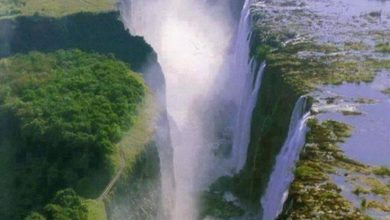Wetland Conservation Sustainability for Zimbabwe’s Future

Zimbabwe is a country renowned for its diverse landscapes and rich biodiversity. Among its greatest natural assets are the wetlands. These unique ecosystems, locally known as matoro or amaxhaphozi, offer a sanctuary for countless species. They also provide essential services such as water filtration, flood control and carbon sequestration. In recent years, policymakers, communities, and environmental experts have united under a shared vision of wetland conservation to protect and restore these vital habitats.
Today, our nation’s focus on environmental stewardship drives initiatives that honour our natural heritage and work toward a sustainable future. Furthermore, as urban development and climate change impose increasing pressures, Zimbabwe’s commitment to wetland conservation is more critical than ever.
Introduction to Zimbabwe’s Wetland Ecosystems
In Zimbabwe, wetlands cover a modest but significant portion of the landscape, offering ecological benefits. Historically undervalued, these ecosystems have emerged as front-line defenders against climate variability and water scarcity. Moreover, wetlands play a crucial role in maintaining hydrological balance, thus preventing the devastating impacts of floods and droughts. In addition, they serve as natural purification systems by filtering pollutants and sediment from water.
Consequently, the strategic application of wetland conservation practices has helped pave the way for integrated land management, ensuring that both human communities and wildlife thrive. Indeed, these efforts are supported by national guidelines and regional research, including frameworks outlined by BirdLife Zimbabwe and studies published via Springer.
Ecological Significance and Socioeconomic Benefits
Zimbabwe’s wetlands are ecological powerhouses that underpin many of the nation’s natural processes. They nurture diverse flora and fauna, support fisheries and even enhance local microclimates. Furthermore, wetlands contribute significantly to groundwater recharge, thereby ensuring water security for both agriculture and domestic use.
Additionally, healthy wetlands drive eco-tourism, which in turn bolsters local economies. For example, communities surrounding Harare’s wetland areas have benefited from sustainable tourism initiatives that celebrate the region’s natural beauty.
Consequently, by emphasising wetland conservation and its allied strategies, Zimbabwe is not only preserving biodiversity but also enhancing the quality of life for its citizens. Moreover, integrated management practices have proven successful in striking a balance between development and environmental health.
Challenges to the Survival of Zimbabwe’s Wetlands
Despite their importance, Zimbabwe’s wetlands are facing multiple challenges that threaten their long-term integrity. Rapid urban expansion, intensive agriculture and industrial encroachment have accelerated the degradation of these fragile ecosystems.
Furthermore, climate change has introduced unpredictable rainfall patterns and increased drought frequency, exacerbating water scarcity and habitat loss. In addition, unsustainable land practices have diminished the wetland areas that once flourished under traditional management. Consequently, maintaining effective wetland conservation becomes increasingly complex amid competing economic interests.
However, with proactive policy intervention and community engagement, there is hope for reversing current trends. National policies, such as the environmental management acts and the recent National Wetland Policy, address these challenges head-on.
Paths to Recovery and Sustainable Management
In response to these challenges, Zimbabwe is adopting innovative approaches to restore and sustainably manage its wetlands. Notably, local governments and environmental organisations are spearheading restoration initiatives that focus on re-establishing natural hydrological regimes and native vegetation.
Additionally, scientists and conservationists are embracing methods that promote wetland conservation by integrating traditional knowledge with modern ecological practices. For instance, projects targeting swamp conservation, marsh preservation, and fen management are underway with impressive community participation.
Moreover, these initiatives are complemented by emerging efforts in bog rejuvenation, aquatic habitat renewal, and riparian management—three new approaches that enhance the resilience of wetland ecosystems. Therefore, the combined focus on both restoration and sustainable use is yielding promising results in areas affected by unsustainable practices.
Swamp Conservation, Marsh Preservation, and Fen Management in Zimbabwe
Across the nation, varied approaches to wetland management reflect the diverse characteristics of Zimbabwe’s waterlogged landscapes. In urban zones like Harare, robust swamp conservation and marsh preservation initiatives help mitigate the impacts of rapid urban sprawl. Simultaneously, fen management projects in rural areas are designed to protect water quality and support agricultural productivity.
Moreover, these efforts are intricately linked to broader wetland conservation strategies that emphasise the balance between development and ecological integrity. Additionally, the bog rejuvenation, aquatic habitat renewal and riparian management reinforces the multipronged approach necessary to sustain healthy wetlands over the long term.
Consequently, such comprehensive strategies are critical for ensuring Zimbabwe’s wetlands continue to contribute to environmental stability and economic growth.
Future Outlook for Zimbabwean Wetland Conservation
Looking toward the future, the prospects for Zimbabwe’s wetlands hinge on the continued commitment to wetland conservation and adaptive management. It is imperative that all stakeholders, from governmental agencies to local communities, work collaboratively to enforce policies and promote sustainable practices.
Furthermore, integrating scientific research with traditional land-use practices can aid in developing innovative conservation models tailored to Zimbabwe’s unique environmental and socioeconomic context. In addition, educational programs and community engagement are essential to raise awareness about the indispensable services provided by wetlands.
As a result, a unified vision for environmental stewardship can help prevent further degradation and restore natural habitats. Ultimately, the resilience and sustainability of Zimbabwe’s wetlands will serve as a lasting legacy for both current and future generations.
In conclusion, effective wetland conservation is not just an environmental imperative—it is an investment in the prosperity and health of the entire nation.
Conclusion
Zimbabwe’s wetlands represent both a natural treasure and a critical resource for sustainable development. Through comprehensive strategies that include wetland protection, restoration, and sustainability practices—ranging from swamp conservation and marsh preservation to fen management, bog rejuvenation, aquatic habitat renewal, and riparian management—the nation is charting a path toward ecological resilience. Moreover, by enforcing proactive policies and encouraging community participation, Zimbabwe demonstrates a powerful commitment to wetland conservation. Moving forward, as climate change and urban pressures intensify, the prioritization of environmental stewardship will be pivotal. Ultimately, effective wetland conservation provides a robust framework for preserving biodiversity, securing water resources, and ensuring a thriving, sustainable future. Success in these endeavors will not only protect a vital component of Zimbabwe’s natural heritage but also serve as an enduring symbol of the nation’s commitment to nurturing its environment.




